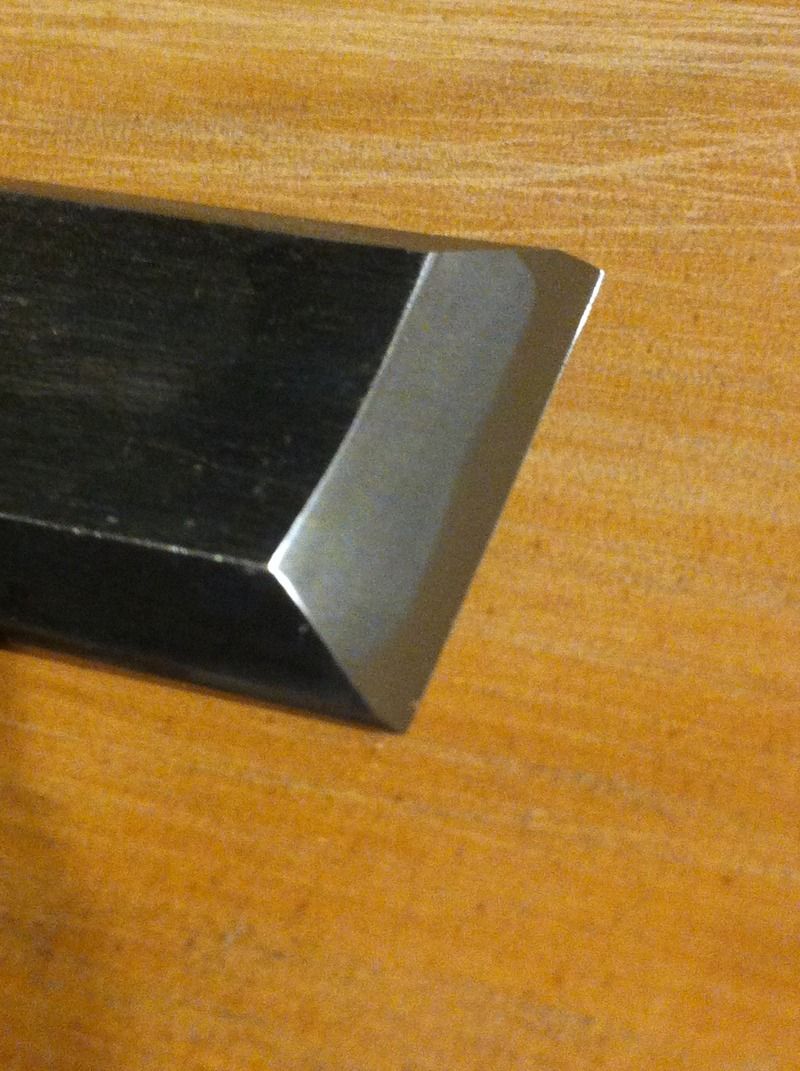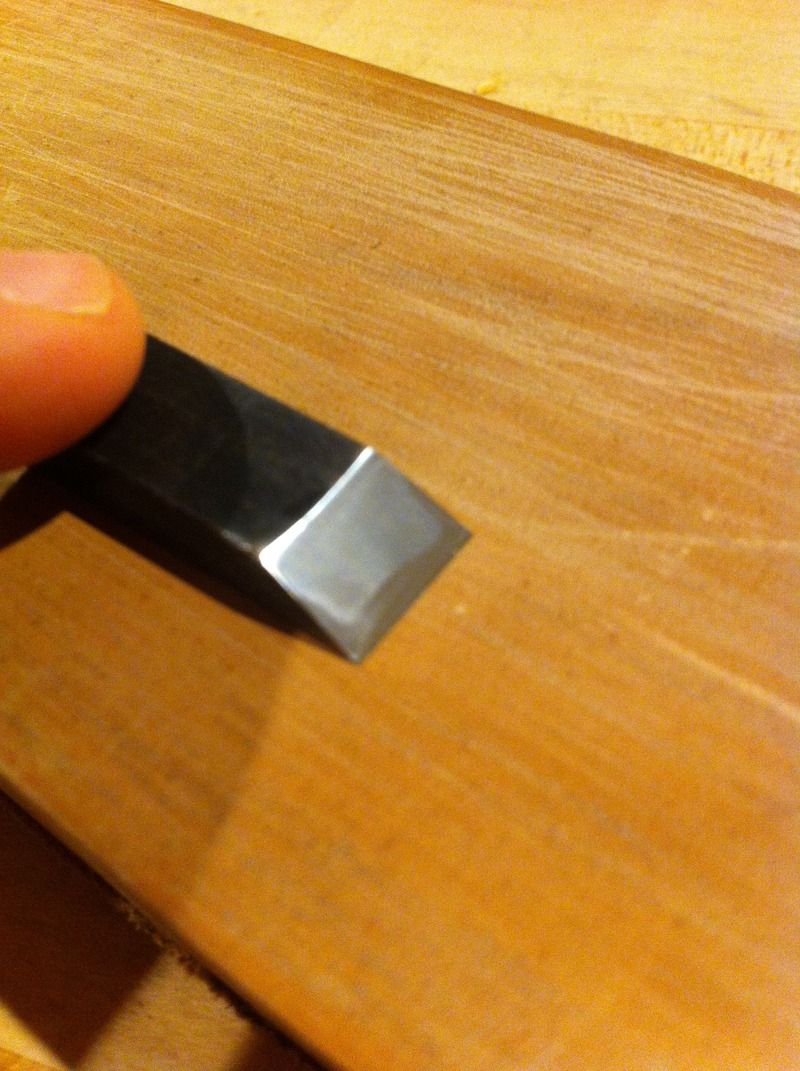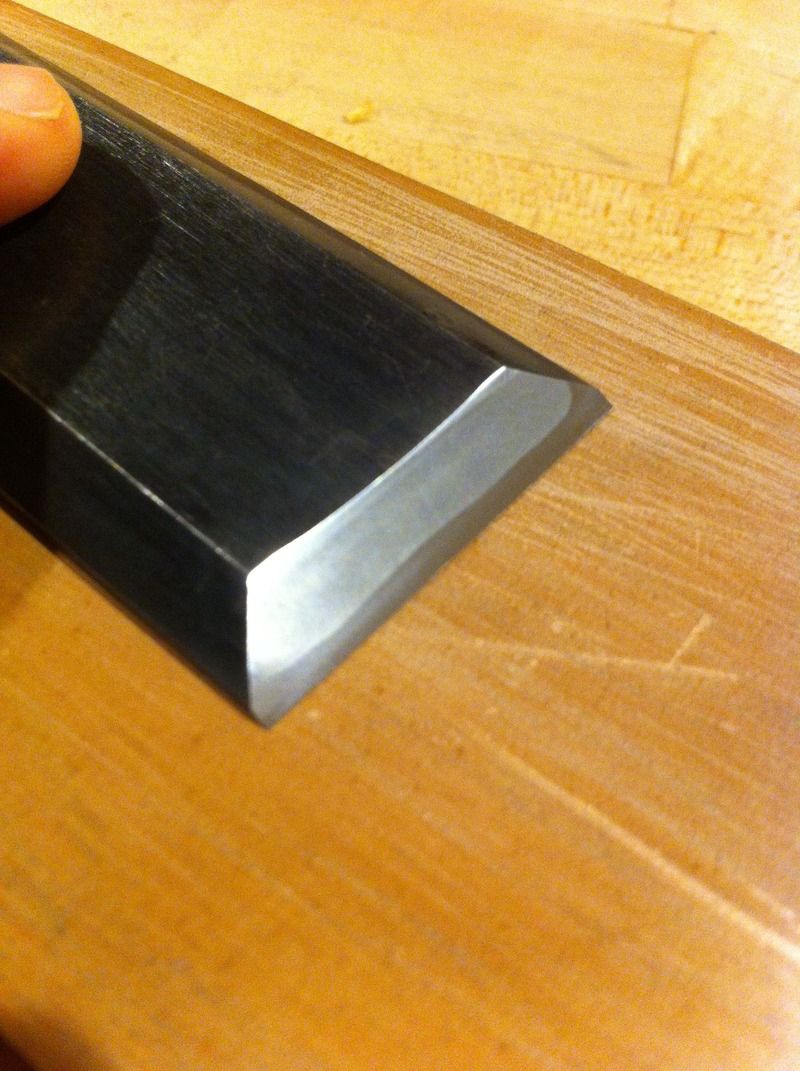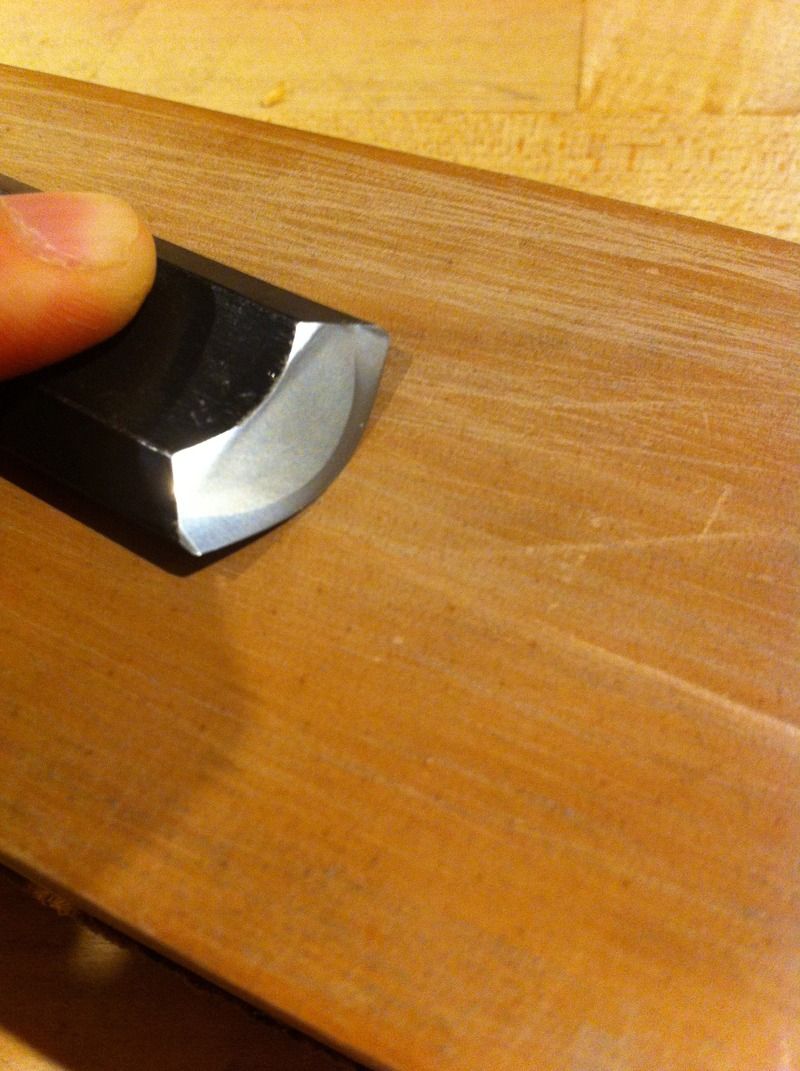I can understand that, it doesn't discourage me in the least. My son will learn Mandarin as he grows up, along side english so I will learn along side him. My wife is Chinese (1st generation american) and so she has studied the culture in and above learning mandarin.
This is a big source of interest for me and so I enjoy the process.
Our friends travel back and forth commonly, there are residences which are still period and well kept. They're somewhat kept under wraps though.
Hand techniques
- durbien
- Sweeper of Floors, Maker of Tea
- Location: Southern CA
Post
Re: Hand techniques
We probably should take this discussion outside of this thread (which was, after all, about sharpening stones), but I have often wondered whether it was a prerequisite to know Japanese to really understand Japanese woodworking. This is what I was getting at in my comment on Chris' blog about his Japanese Metalsmithing class. I'm glad Chris has chimed in with his opinions here so I don't have to ask him there..
As a native English speaker of Filipino/Chinese descent, I don't get the feeling that a knowledge of English is required to understand Western woodworking (as if all Western woodworking is English). But I think it's obvious there are things "lost in translation" when it comes to Eastern woodwork. There's also a sense of patronizing - I think going both ways. Westerners tend to think of JW aficionados as being fetishists or weeaboos, while I'm sure many woodworkers who are Japanese or Chinese probably look at some Western work as crude. And of course there's the shadow of racism going both ways as well..
I too have pondered what it would take to learn Japanese simply so I could understand my woodworking books. Both sides of my family would most definitely not approve (as there are deep cultural prejudices against Japan because of occupation during WW2). Of course America did horrendous things to Japan as well and that hasn't stopped Japanese from being similarly interested in American culture.
Chris, when did you first learn Japanese? How long did it take you to become "fluent", and is there a route you would suggest, keeping in mind the rather technical nature of woodworking texts? I once got a book that was attempting to teach non-native Japanese speakers Japanese technical language (mathematics and scientific terms, etc.) and that was a disaster!
So, all that being said... Do I buy the $200 rock, or what?
Darrell
As a native English speaker of Filipino/Chinese descent, I don't get the feeling that a knowledge of English is required to understand Western woodworking (as if all Western woodworking is English). But I think it's obvious there are things "lost in translation" when it comes to Eastern woodwork. There's also a sense of patronizing - I think going both ways. Westerners tend to think of JW aficionados as being fetishists or weeaboos, while I'm sure many woodworkers who are Japanese or Chinese probably look at some Western work as crude. And of course there's the shadow of racism going both ways as well..
I too have pondered what it would take to learn Japanese simply so I could understand my woodworking books. Both sides of my family would most definitely not approve (as there are deep cultural prejudices against Japan because of occupation during WW2). Of course America did horrendous things to Japan as well and that hasn't stopped Japanese from being similarly interested in American culture.
Chris, when did you first learn Japanese? How long did it take you to become "fluent", and is there a route you would suggest, keeping in mind the rather technical nature of woodworking texts? I once got a book that was attempting to teach non-native Japanese speakers Japanese technical language (mathematics and scientific terms, etc.) and that was a disaster!
So, all that being said... Do I buy the $200 rock, or what?
Darrell
- durbien
- Sweeper of Floors, Maker of Tea
- Location: Southern CA
Post
Yes, I think that is what he is trying to tell me as well. I was just wondering if the price was "in the ballpark" (i.e. reasonable) for a first stone.
The $200 stone is "tool size" (apx 200~210mm x 65~75mm x thickness) while the cheaper stone is "razor size" (150mm X 80mm and probably thinner).
Darrell
Re: Hand techniques
Thanks Mathieu,Mathieu wrote:I believe Yamashita-san has a policy where you are able to return the stone if you don't like it. You may want to discuss this option with him and ask him more precisely about the characteristics of the stone. I am not sure if it will matter much since it is your first stone and you have little to compare it with. You need to start somewhere.
Yes, I think that is what he is trying to tell me as well. I was just wondering if the price was "in the ballpark" (i.e. reasonable) for a first stone.
The $200 stone is "tool size" (apx 200~210mm x 65~75mm x thickness) while the cheaper stone is "razor size" (150mm X 80mm and probably thinner).
Darrell
- Chris Hall
- Site Admin
- Contact:
- Location: Greenfield, Massachusetts
Post
Re: Hand techniques
I think the techniques of woodworking or metalworking of any culture a more or less a set of skills which can be broken down and learned by anyone.
I think though that understanding the objects of a material culture is going to involve some degree of immersion into that world. It's not simply a 'look' or an aesthetic to try and emulate. I think to understand the reasons that certain constructed forms come to predominate in a given place has an awful lot to do with the culture and history of that place. So, spending some time to learn about such things can only be a plus. Spending time in such a place and learning the language is going to give you a larger window for sure.
It's very hard, I think, to avoid falling into the trap of 'exoticizing' another culture when you are only exposed to its surface. We 'see' geisha, samurai, bullet trains, Hello Kitty. They see our movies, know about cowboys, gun culture, Niagara Falls, etc.. Both see a caricature of the other, more or less. Maybe that's what Darrell was referring to by people seeing "JW aficionados as being fetishists or weeaboos". Not exactly sure what a 'weeaboo' is, but I grasp the implication.
If all I knew about Japanese woodworking was as a result of reading Odate's books, or the like, then I know I would have a rather narrow view of the situation. This is somewhat the situation most woodworkers who become interested in Japanese woodwork find themselves in. Where there's a lack of solid information, the tendency is to fill it with stuff from your own internal movie projector. While it might be an entertaining show, it can only be a fiction.
So I would study to a point, and then sit on that for a while, until I came to realize that i was still barely able to express myself after a year of scattered study. Having very boring jobs with lots of time on my hands did help at certain junctures.
In the end, I found that having the carrot of passing proficiency exams was motivating me to keep pushing my study further. I left the country in 1999 with an upper intermediate level of spoken fluency. That has since fallen down the abyss that is 'no practice speaking for 15 years'. I do keep up my study of kanji, more or less. Partly it is because I am a kanji geek, and partly because it allows me to access Japanese carpentry books. It's still a struggle for me to read them, and I need a dictionary nearby. The odd time I can read a sentence or even a complete paragraph without needing to check the dictionary is sorta like a minor victory.
As for how to study, well, there are all sorts of methods and people have different learning styles. I think it is really hard to do when you live in another country, and have no real need to actually use the language to communicate. Perhaps a community college course would be a good route, but in the end, you will have to explore various avenues of study and figure out which is the best for you based on trial and error. Some people pick up certain aspects of the language sooner than others, like writing, or speech or reading. My wife, for instance, knows hardly any Japanese, but because she is good at the tones of mandarin, she is able to produce Japanese vowel sounds more perfectly than I can. To learn to speak Japanese fluently you need a willing practice partner who can model correct speech for you and correct your errors. Few regular Japanese folks are going to be inclined in that direction, so getting formalized instruction in that area is likely best. If you want to learn to speak like a guy, you need to practice speaking with another guy. Female speech patterns are different, and learning from a woman may result in your adoption of language patterns that will leave you sounding effeminate. Ditto if you are a woman- best to learn Japanese from a Japanese woman.
I think though that understanding the objects of a material culture is going to involve some degree of immersion into that world. It's not simply a 'look' or an aesthetic to try and emulate. I think to understand the reasons that certain constructed forms come to predominate in a given place has an awful lot to do with the culture and history of that place. So, spending some time to learn about such things can only be a plus. Spending time in such a place and learning the language is going to give you a larger window for sure.
It's very hard, I think, to avoid falling into the trap of 'exoticizing' another culture when you are only exposed to its surface. We 'see' geisha, samurai, bullet trains, Hello Kitty. They see our movies, know about cowboys, gun culture, Niagara Falls, etc.. Both see a caricature of the other, more or less. Maybe that's what Darrell was referring to by people seeing "JW aficionados as being fetishists or weeaboos". Not exactly sure what a 'weeaboo' is, but I grasp the implication.
If all I knew about Japanese woodworking was as a result of reading Odate's books, or the like, then I know I would have a rather narrow view of the situation. This is somewhat the situation most woodworkers who become interested in Japanese woodwork find themselves in. Where there's a lack of solid information, the tendency is to fill it with stuff from your own internal movie projector. While it might be an entertaining show, it can only be a fiction.
I went over to the country in 1992 knowing no Japanese. While I lived in a big city (Sapporo), and was hanging out with other gaijin like myself, my Japanese continued to go pretty much nowhere. It was only when I moved out to the sticks and found myself in a Mars-like world where almost nobody spoke English that I found myself really needing to learn so Japanese if I was to get through daily life without constant help from others.Chris, when did you first learn Japanese? How long did it take you to become "fluent", and is there a route you would suggest, keeping in mind the rather technical nature of woodworking texts? I once got a book that was attempting to teach non-native Japanese speakers Japanese technical language (mathematics and scientific terms, etc.) and that was a disaster!
So I would study to a point, and then sit on that for a while, until I came to realize that i was still barely able to express myself after a year of scattered study. Having very boring jobs with lots of time on my hands did help at certain junctures.
In the end, I found that having the carrot of passing proficiency exams was motivating me to keep pushing my study further. I left the country in 1999 with an upper intermediate level of spoken fluency. That has since fallen down the abyss that is 'no practice speaking for 15 years'. I do keep up my study of kanji, more or less. Partly it is because I am a kanji geek, and partly because it allows me to access Japanese carpentry books. It's still a struggle for me to read them, and I need a dictionary nearby. The odd time I can read a sentence or even a complete paragraph without needing to check the dictionary is sorta like a minor victory.
As for how to study, well, there are all sorts of methods and people have different learning styles. I think it is really hard to do when you live in another country, and have no real need to actually use the language to communicate. Perhaps a community college course would be a good route, but in the end, you will have to explore various avenues of study and figure out which is the best for you based on trial and error. Some people pick up certain aspects of the language sooner than others, like writing, or speech or reading. My wife, for instance, knows hardly any Japanese, but because she is good at the tones of mandarin, she is able to produce Japanese vowel sounds more perfectly than I can. To learn to speak Japanese fluently you need a willing practice partner who can model correct speech for you and correct your errors. Few regular Japanese folks are going to be inclined in that direction, so getting formalized instruction in that area is likely best. If you want to learn to speak like a guy, you need to practice speaking with another guy. Female speech patterns are different, and learning from a woman may result in your adoption of language patterns that will leave you sounding effeminate. Ditto if you are a woman- best to learn Japanese from a Japanese woman.
- djwong
- Deshi
- Location: Cupertino, CA
Post
Re: Hand techniques
Durbien,
I have used the Sigma 13K, but now mostly use natural finish stones. The 13K is a fine stone that works well with hand sharpening. You have to wet it for a minute or two, otherwise it will clog and glaze over very quickly. I used the 13K after a 8K Naniwa Snow White. The edge was demonstrably sharper after the Sigma 13K. A downside is that the 13K will leave the bevel surface uniformly "shiny", so the lamination line on japanese blades is not very visible. The stone surface also loads up with dark black streaks from the "jiggle", as most synthetic stones do. I switched to natural stones for the experience, and the aesthetic quality they impart to japanese blades. The stones I have are slower than synthetic stones, but do not glaze easily. The softer stones can be quite muddy, but the mud allows the blade to move smoothly on the surface.
I recently purchased a small razor stone from So Yamashita. It is harder than I expected, and I cannot get it to produce a slurry on its own. I use an Atoma 1200 to prep the stone and create the slurry. While it can result in a fine edge (I am able to perform the "hanging hair test" occasionally), it is very difficult to use. Once the slurry thins, coarse particles are drawn from the stone, resulting in an awful scratchy crunchy sound and a deep scratch on the blade. I mention this to say that a hard stone can be difficult to use.
David
I have used the Sigma 13K, but now mostly use natural finish stones. The 13K is a fine stone that works well with hand sharpening. You have to wet it for a minute or two, otherwise it will clog and glaze over very quickly. I used the 13K after a 8K Naniwa Snow White. The edge was demonstrably sharper after the Sigma 13K. A downside is that the 13K will leave the bevel surface uniformly "shiny", so the lamination line on japanese blades is not very visible. The stone surface also loads up with dark black streaks from the "jiggle", as most synthetic stones do. I switched to natural stones for the experience, and the aesthetic quality they impart to japanese blades. The stones I have are slower than synthetic stones, but do not glaze easily. The softer stones can be quite muddy, but the mud allows the blade to move smoothly on the surface.
I recently purchased a small razor stone from So Yamashita. It is harder than I expected, and I cannot get it to produce a slurry on its own. I use an Atoma 1200 to prep the stone and create the slurry. While it can result in a fine edge (I am able to perform the "hanging hair test" occasionally), it is very difficult to use. Once the slurry thins, coarse particles are drawn from the stone, resulting in an awful scratchy crunchy sound and a deep scratch on the blade. I mention this to say that a hard stone can be difficult to use.
David
- Chris Hall
- Site Admin
- Contact:
- Location: Greenfield, Massachusetts
Post
Re: Hand techniques
In the end, it's a crap shoot. Your results with a given natural stone depend upon what blades you have, what stones they may work best with, and your sharpening technique. $200 is not a lot of money for a natural stone - cheaper than some synthetics in fact- and I'm sure you will learn something new, so on that account at least it is worth the exploration.durbien wrote:So, all that being said... Do I buy the $200 rock, or what?
- Brian
- Deshi
Post
Re: Hand techniques
I hope you guys don't mind my still going on about this stuff;
I found the quality of the cutting edge pretty comparable between the 13k Sigma and the Shinden Yama Renge Suita that I have. The suita does not build a slurry quickly and so I use a nagura stone paired with it to build a light slurry. I clean my stones off after every use and so I rebuild the slurry every time it is needed.
I like the finish that is produced by the suita much more, it's not shiny.
I also have the snow white and after using all three finish stones for some months now, I find the shinden to be my favorite, the sigma next in line and I sort of dislike the snow white even though initially I liked it better than the stone I was using at the time.
I found the quality of the cutting edge pretty comparable between the 13k Sigma and the Shinden Yama Renge Suita that I have. The suita does not build a slurry quickly and so I use a nagura stone paired with it to build a light slurry. I clean my stones off after every use and so I rebuild the slurry every time it is needed.
I like the finish that is produced by the suita much more, it's not shiny.
I also have the snow white and after using all three finish stones for some months now, I find the shinden to be my favorite, the sigma next in line and I sort of dislike the snow white even though initially I liked it better than the stone I was using at the time.
- Brian
- Deshi
Post
Re: Hand techniques
I'd like to continuing this discussion if you guys will have it. I do think there is some insight to be gained by comparing results of various stones and steels, since we're all working with similar steels it could end up being a decent catalog of results.
If no one else is interested in doing so then I will just post up results as I continue to put various makers blades to various natural stones, unless it proves to be incredibly pointless.
Koyamaichi blue steel #2 on Shinden Yama Renge Suita

If no one else is interested in doing so then I will just post up results as I continue to put various makers blades to various natural stones, unless it proves to be incredibly pointless.
Koyamaichi blue steel #2 on Shinden Yama Renge Suita

- Brian
- Deshi
Post
Re: Hand techniques
All of these are with the Shinden Yama Renge Suita. I mention this because I will likely be purchasing more natural stones (healthy addiction.....perhaps, or perhaps not).
The surface these are being presented on is a strop.
Koyamaichi White Steel 2

Koyamaichi Blue Steel #2. The blue steel seems to be coming up a bit brighter than white #2, which doesnt surprise me.

Ouchi white steel #2 I had to adjust the bevel on this, and when I do so I grind most of the way, no need to unnecessarily grind the blade back just for aesthetics when I few regrinds will accomplish the same task over time.

I will follow up in a few weeks with some White steel #1.
The surface these are being presented on is a strop.
Koyamaichi White Steel 2

Koyamaichi Blue Steel #2. The blue steel seems to be coming up a bit brighter than white #2, which doesnt surprise me.

Ouchi white steel #2 I had to adjust the bevel on this, and when I do so I grind most of the way, no need to unnecessarily grind the blade back just for aesthetics when I few regrinds will accomplish the same task over time.

I will follow up in a few weeks with some White steel #1.
Who is online
Users browsing this forum: No registered users and 29 guests
 alt.jpg)